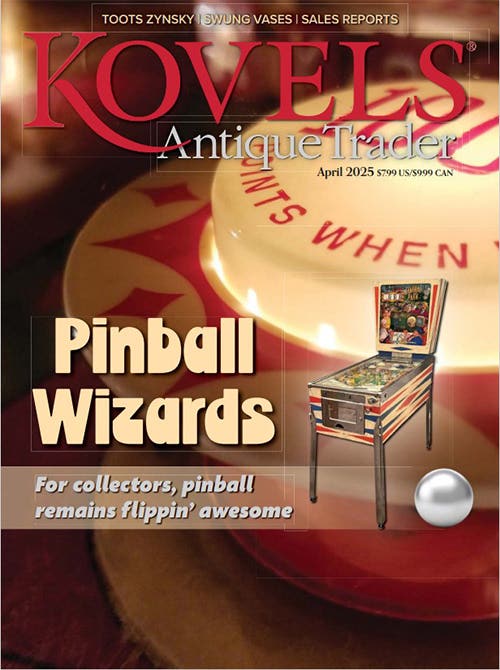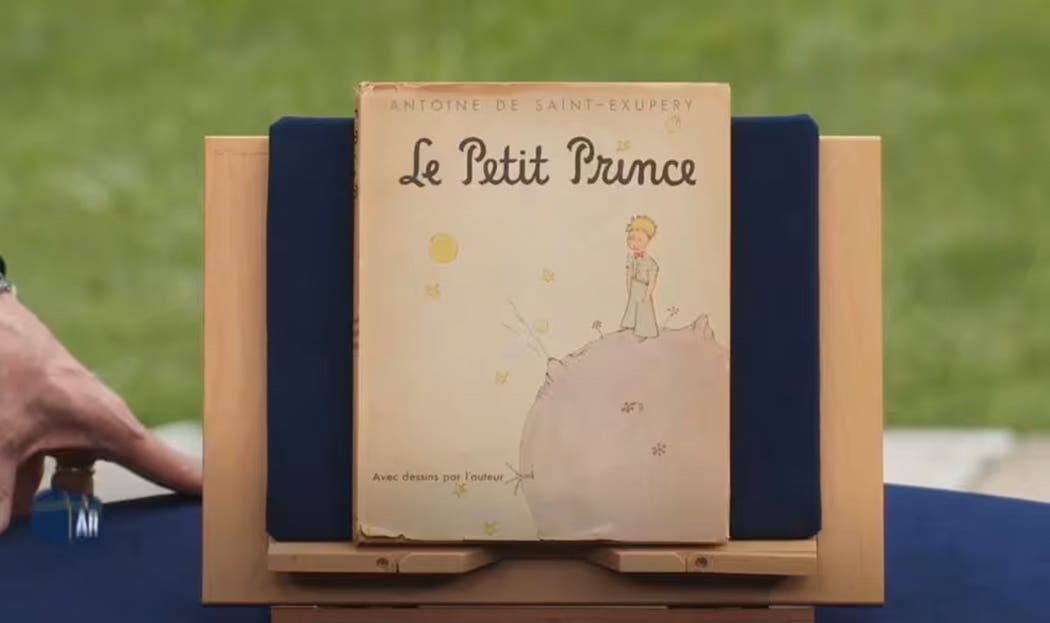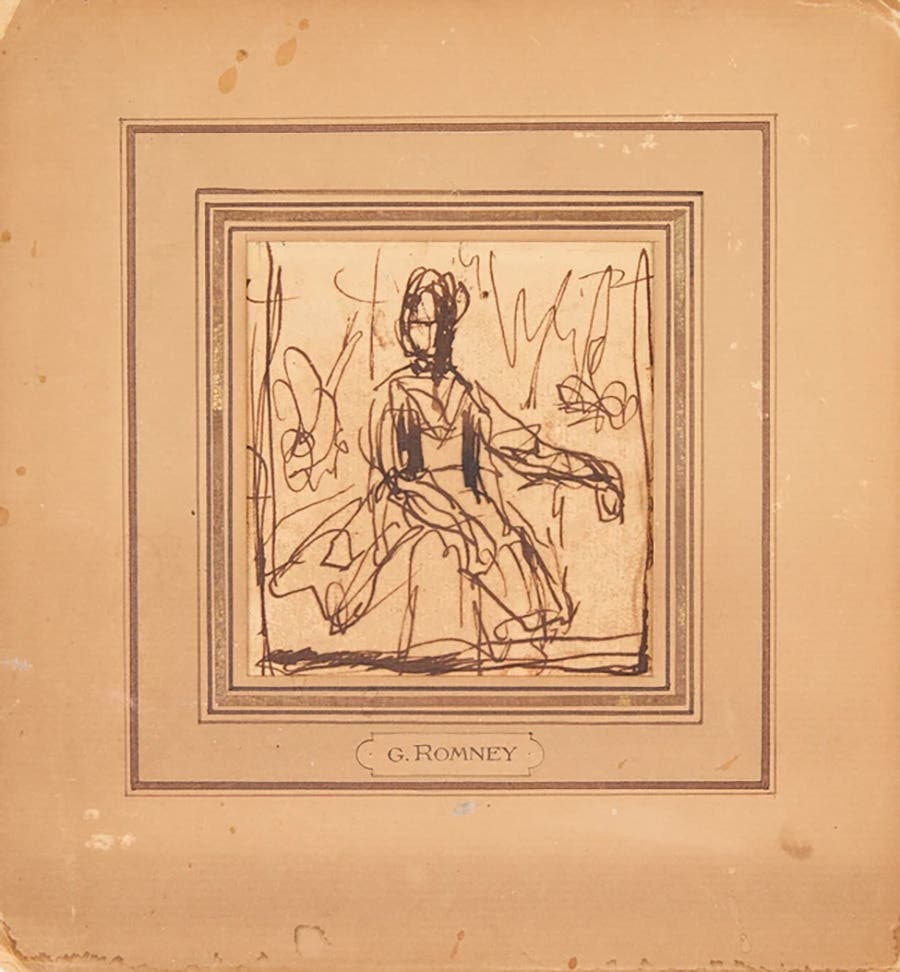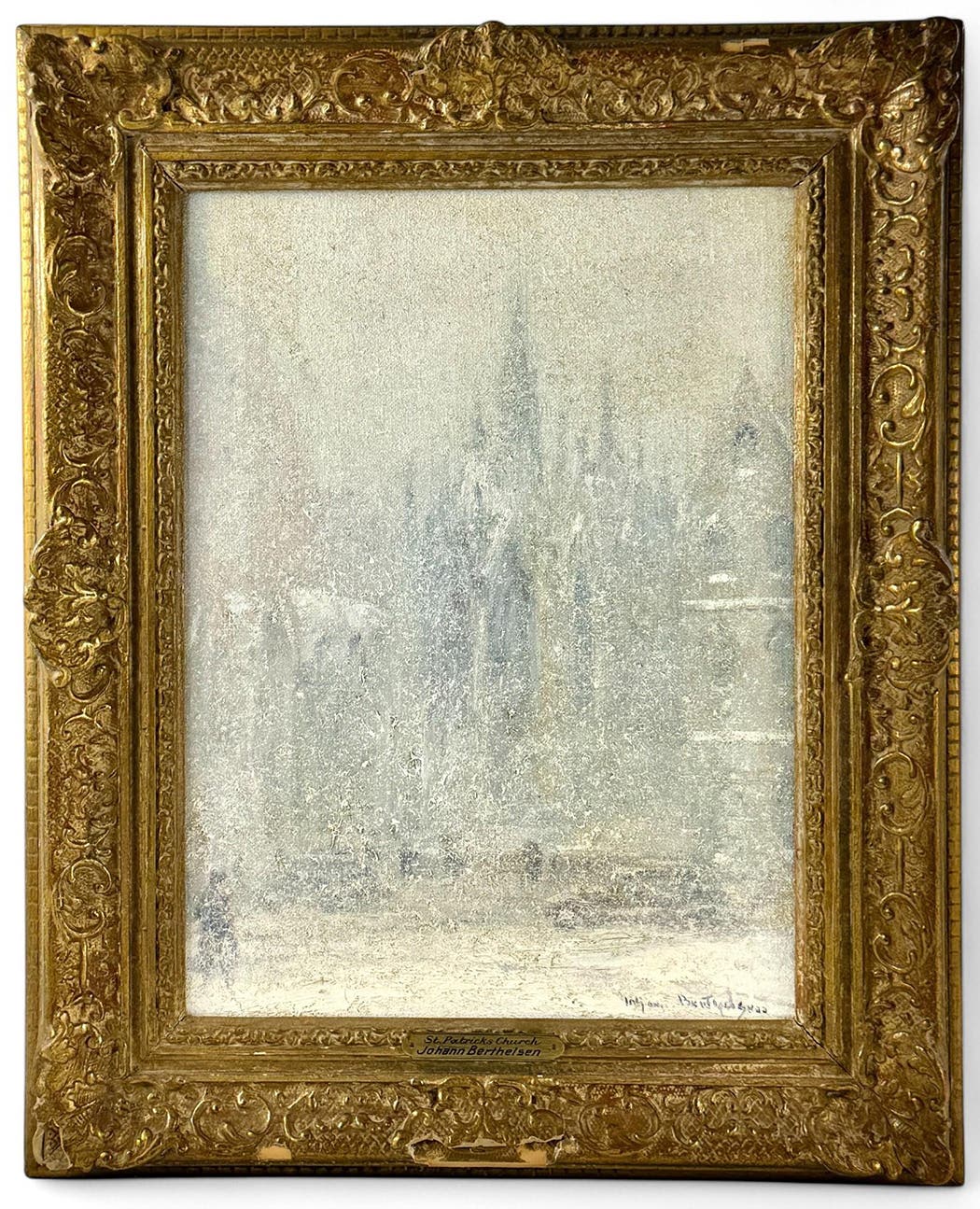Last of Its Kind
In a world once populated by annual price guides, Kovels’ Antiques & Collectibles, directed by the indomitable 93-year-old Terry Kovel, now stands alone.
Recently, Terry Kovel visited an estate sale near her Shaker Heights home in suburban Cleveland. Kovel was impressed, which is saying something considering she just turned 93 and has seen about all there is to see when it comes to antiques and collectibles.
The sale was neat. Orderly and clean. Everything was displayed just ... right.
Naturally, Kovel had to buy something. What’s the fun of browsing through a house filled with life’s collected treasures if you don’t buy something? And yes, Kovel’s own home, the one she and her late husband, Ralph, built in 1955, is filled with so many treasures it’s nearly impossible to wrap your head around them all. No matter. One more pretty thing is always welcome.
Besides, Kovel discovered a great deal. She bought a Royal Copenhagen figurine for $15. A steal.
And there you have it. If you ever wonder why Terry Kovel and her Shaker Heights crew – including her daughter, Kim – continue to publish Kovels’ Antiques & Collectibles Price Guide – now celebrating its 54th edition – well, you can stop. After more than a half century, after building a publishing empire from scratch with Ralph, and after all the early stumbling and bumbling that led to eventual triumphs, the simple thrill of the hunt is still too much darn fun to ever stop. Even if what you walk away with is a $15 figurine.
It’s what Terry Kovel knows. And what she does. Always.
In world once populated by a slew of annual price guides, Kovels’ Antiques & Collectibles endures, a surviving 632-page Titan of Print surrounded by the relentless click of digital challengers.
In The Beginning ...
In 1948, Edwin G. Warman, an entrepreneur in Uniontown, Pennsylvania, published the first modest price guide, Warman’s Antiques and Their Current Prices. It was a bold move. Until then, antiques were sold primarily through dealers, antiques shops and at auctions. It was the Wild West. Knowledge was scarce. Values varied wildly. Buyers were easily duped.
Under Warman’s care, the printed price guide changed all that forever, helping to establish a baseline of information. An annual Warman’s guide was started in 1966. Two years later, Terry and Ralph Kovel launched The Complete Antiques Price List, which, over the years, morphed into its current name. Schroeder’s Antiques Price Guide joined the party in 1982. Not to be outdone, a 900-page annual beast called The Antique Trader Antiques & Collectibles Price Guide started in 1984.
Others came and went, but these were the main players in the field. Oh sure, Miller’s Collectibles Handbook & Price Guide is a wonderful reference, but it’s British-based and no longer annual.
It wasn’t unusual for an annual title in the U.S. to sell 40,000-50,000 copies – or more. Those were the salad days, pre-Internet and, just as significantly for some, pre-Great Recession.
In a famous passage in Ernest Hemingway’s The Sun Also Rises, a character is asked how he went bust. “Two ways,” he answers. “Gradually and then suddenly.” And so it was for the annual antiques and collectibles price guide.
The housing bubble and market crash hastened the collapse of familiar bookstore chains –Borders, Crown Books, Waldenbooks, etc. – leaving far fewer customers and distribution channels for publishers. Barnes & Noble survived, but it would never be the player it once was. Amazon emerged from the dark economic times as the dominant book seller and remains so today.
Meanwhile, the Internet, to many people’s way of thinking, did what Edwin G. Warman set out to do in 1948: provide collecting information on a grand scale.
As Google searches became more embedded in the fabric of daily life, those once pioneering print price guides faced a new reality. And tapped out. Schroeder’s was the first to surrender, folding shop in 2010 after twenty-nine editions. Warman’s, after fifty-two editions, faded away in 2018, the same year as Antique Trader (thirty-five editions).
All are now gone ... except Kovels’, led by the indomitable Terry Kovel.
And Then There Was One
“I don’t want to stop working. I would go crazy if I did,” says Kovel, who published with her husband their first book in 1953, Dictionary of Marks – Pottery and Porcelain. “I stayed in during the pandemic – I know we all did. Fortunately, I had a job to go to. It was a job in my house, but it still got me out of bed and off to work. That saved me because I wasn’t about to go out and learn how to play tennis.”
The Kovel name is synonymous with the antiques and collectibles field for a reason. Since that first book in 1953, Terry and Ralph published a myriad of titles, many of which came to define collecting genres. They produced a syndicated weekly newspaper column, columns for Forbes and House Beautiful, developed a website, established a newsletter, and starred in television series for PBS and HGTV.
Although Ralph died in 2008 at age 88, daughter Kim, who lives in Miami, oversees operational aspects of the business and shares a byline on the annual price guide. The family affair is even extended to Kim’s husband, Al Eiber, who contributed a special center section for the new edition called “Collecting Trends: Twentieth-Century American Studio Jewelry.”
“She really is amazing,” Kim says of her mother. “She has a pretty vast knowledge of the antiques and collectibles world, and she really does put her mark on the book. Because, as you know from talking with her, she really knows the field. She reads constantly, everything, all the publications.
“We went to an estate sale just this past weekend, so she’s really still out and about. She really has a sense of the market and what people are interested in. We have so many categories. Every year we debate what’s in and what’s out, what goes into the book and what we need to take out as the industry changes and as what people collect changes.”
The beauty of Kovels’ Antiques & Collectibles Price Guide goes beyond the obvious. It is a book of a thousand small surprises and delights. Page through the reference and it is as if you are strolling through a wonderfully curated flea market with Terry Kovel personally pointing out the traditional, the trends and the eclectic.
The variety – 720 categories, 3,000 color images, 12,500 prices – is staggering. And a whole lot of fun.
The largest item listed this year is a Flemish-styled tapestry from the early 1900s stretching to 111 inches by 206 inches. It sold for $4,720. The smallest item? A set of 18-karat gold cuff links with gemstones, made by Trianon, measuring a half inch. They went for $610.
The most expensive item found is a seven-gallon stoneware water cooler with cobalt blue Broadway street scene, made in 1846. It sold for $480,000. The least expensive? A plastic figural Spider-Man bookmark made in the 1980s by Nasta Co. that went for $2.
Looking for weird? The new edition lists artificial legs several times, usually the plain wooden stump variety pictured in pirate stories. The oddest item? How about a child’s iron coffin featuring a glass window? The 55-inch coffin has a value of $11,250.
The book also features a section on record-setting prices, separate from the A-to-Z listings because “we don’t want to confuse people into thinking their old shoes are going to be worth money,” Terry Kovel says, referencing a pair of Kanye West’s Grammy-worn Nike Air Yeezy sneakers that sold for $1.8 million.
Put it all together – the weird, the wonderful, the thousands of color images, the 720 categories of curated goodies, the expertise, the research – and you still have, well, a book, albeit a fascinating one.
A Simple Truth
So, the question remains: How has Kovels’ survived the onslaught of digital when so many others could not?
It helps, certainly, that the operation offers its own digital wonderland, a subscription-based online database of a million values and images. But there’s more to it than that, something embedded in the core of the book and its audience. Maybe that, too, is obvious.
“I think there are still a lot of people who like a book,” Kim Kovel says. “It’s difficult to say exactly why that’s true, but it is. We have a lot of loyal readers who come back every year to buy the new edition. We try to give them value for what they’re buying. We know people really like images and we try to put in as many images as we can and at the same time give people a lot of prices so they can have a sense of the market.
“It’s nice to hold a book in your hand and flip through it instead of sitting in front of a computer all the time. It’s a different experience.”
All of which is true, but there’s something else at work here, something you can’t put your finger on exactly, or explain neatly and precisely as one would in describing an image in the book. But given time, sitting in a comfortable chair with the book in your hands, you soon begin to realize that what you have is not a book at all, not really. What you hold in your hands is a life that stretches 93 years, one that remains fascinated by a $15 Royal Copenhagen figurine at an estate sale.
Terry Kovel has 20,000 books in her library. Twenty. Thousand. Books. Roll that number in your head for a moment while she talks ...
“I look in a book first,” she says. “It’s more fun to have a book. You’ve discovered something when you find it in a book that is all yours. When you go online and find something, you know that everyone else is discovering it, too. But a book is much more private. It’s much more solitary.”
And this book, this great adventure of a book that started with husband Ralph a half-century ago, what does the future hold for this lone survivor?
“I’ll keep writing it,” Terry Kovel promises, “as long as I can and for as long as people find value in what we do.”
Of course she will. It’s what she does. And what she is. Tennis is not an option.
Kovels’ Antiques & Collectibles Price Guide 2022 ($29.99, Black Dog & Leventhal Publishers) is available at Amazon, Barnes & Noble, and all fine bookstores. You can also purchase the book directly at Kovels.com. A purchase at Kovels.com also includes a Terry Kovel-signed book, an ebook and the booklet Fakes, Fantasies & Reproductions.
You May Also Like:
Paul Kennedy is Editorial Director of the Collectibles Group at AIM Media. He enjoys Mid-century design, photography, vintage movie posters and people with a good story to share. Kennedy has more than twenty-five years of experience in the antiques and collectibles field, including book publishing. Reach him at PKennedy@aimmedia.com.








